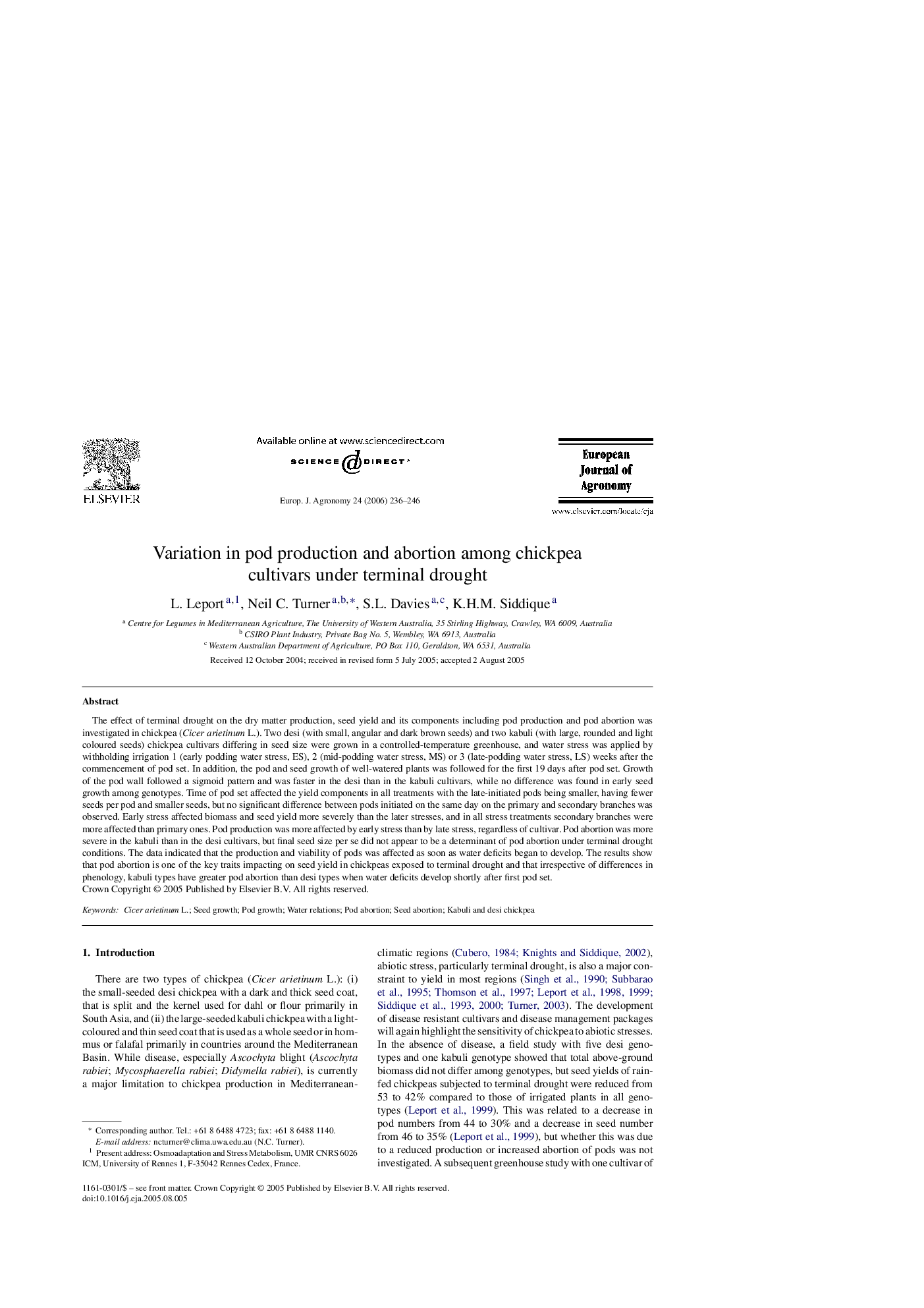| Article ID | Journal | Published Year | Pages | File Type |
|---|---|---|---|---|
| 4509778 | European Journal of Agronomy | 2006 | 11 Pages |
The effect of terminal drought on the dry matter production, seed yield and its components including pod production and pod abortion was investigated in chickpea (Cicer arietinum L.). Two desi (with small, angular and dark brown seeds) and two kabuli (with large, rounded and light coloured seeds) chickpea cultivars differing in seed size were grown in a controlled-temperature greenhouse, and water stress was applied by withholding irrigation 1 (early podding water stress, ES), 2 (mid-podding water stress, MS) or 3 (late-podding water stress, LS) weeks after the commencement of pod set. In addition, the pod and seed growth of well-watered plants was followed for the first 19 days after pod set. Growth of the pod wall followed a sigmoid pattern and was faster in the desi than in the kabuli cultivars, while no difference was found in early seed growth among genotypes. Time of pod set affected the yield components in all treatments with the late-initiated pods being smaller, having fewer seeds per pod and smaller seeds, but no significant difference between pods initiated on the same day on the primary and secondary branches was observed. Early stress affected biomass and seed yield more severely than the later stresses, and in all stress treatments secondary branches were more affected than primary ones. Pod production was more affected by early stress than by late stress, regardless of cultivar. Pod abortion was more severe in the kabuli than in the desi cultivars, but final seed size per se did not appear to be a determinant of pod abortion under terminal drought conditions. The data indicated that the production and viability of pods was affected as soon as water deficits began to develop. The results show that pod abortion is one of the key traits impacting on seed yield in chickpeas exposed to terminal drought and that irrespective of differences in phenology, kabuli types have greater pod abortion than desi types when water deficits develop shortly after first pod set.
